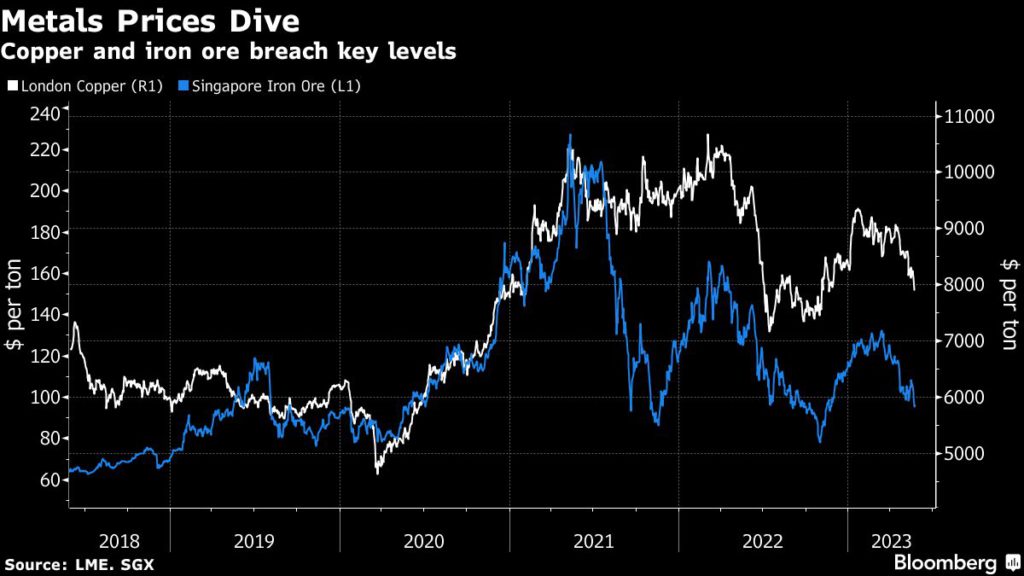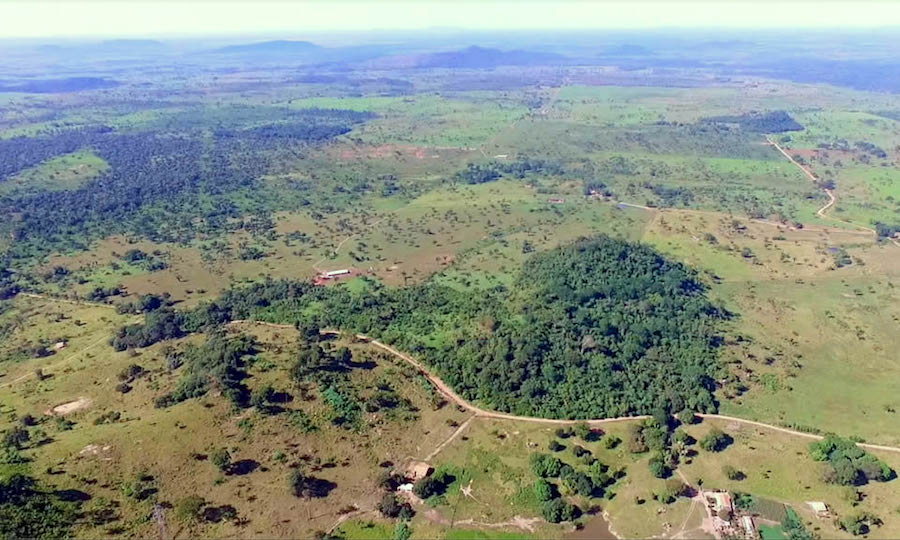Metals markets face grueling summer as Chinese demand falters

Big conferences often crystalize the prevailing sentiment in markets. So it’s probably no coincidence that copper has dived below $8,000 a ton and iron ore is trading south of $100 after metals luminaries gathered in Hong Kong and Singapore to chew over the parlous state of global demand and China’s recovery.
It could be a grueling few months for raw materials that rely on the old economy. China’s building spree that usually takes place in the second quarter has underwhelmed and will soon be replaced by the doldrums of summer. Its manufacturing sector is already there. The world economy is flirting with recession. Rising interest rates and a stronger dollar hover like the proverbial sword over commodities priced in the greenback.

The uncertainty that pervades markets, an anathema to making investments, stems from many sources, be it the war in Ukraine, to the US debt-ceiling standoff and the likelihood of a bitter presidential election next year, to Washington’s fractious relationship with Beijing.
In China, the biggest metals consumer, the modest growth targets set by the central government have failed to ignite demand. The property market remains a major concern, as is the eye-watering level of local government debt.
Beijing could yet ride to the rescue of both metals if it has the appetite to deploy more stimulus. And copper’s relative scarcity and pivotal role in the energy transition put a rosy tinge on any short-term declines. But the clouds gathering over the iron ore market, at least in its current form, look more ominous.
While Goldman Sachs Group Inc. still sees copper hitting $10,000 a ton by this time next year, it could take five years for Chinese steel demand, the biggest driver of iron ore prices, to notably recover, according to one executive at a Chinese trading firm.
Output cuts
China, by far the world’s biggest steel producer, is likely to cut output again this year in pursuit of its climate goals. Global production has already fallen in 2023, according to the World Steel Association. Chinese output is still running 4.1% ahead of last year’s pace in the first four months, so even after moderating in April “there is clearly scope for further declines,” Capital Economics Ltd. said in a note.
That’s a direct threat to iron ore consumption. As China’s economy becomes less steel intensive, a lot hinges on how quickly other developing nations can raise their share of demand as they follow its path to urbanization. And unlike copper, the world’s need to decarbonize presents its own challenges for a notoriously dirty industry.
Much of the discussion around ferrous markets in Singapore this week has centered on the expanding role of green steel and carbon-light production methods that require higher grades of iron ore. That’s likely to entrench the premium on better quality material, and suppress prices of the ore more commonly mined and traded on futures exchanges.
{{ commodity.name }}
{{ post.title }}
{{ post.date }}

Comments